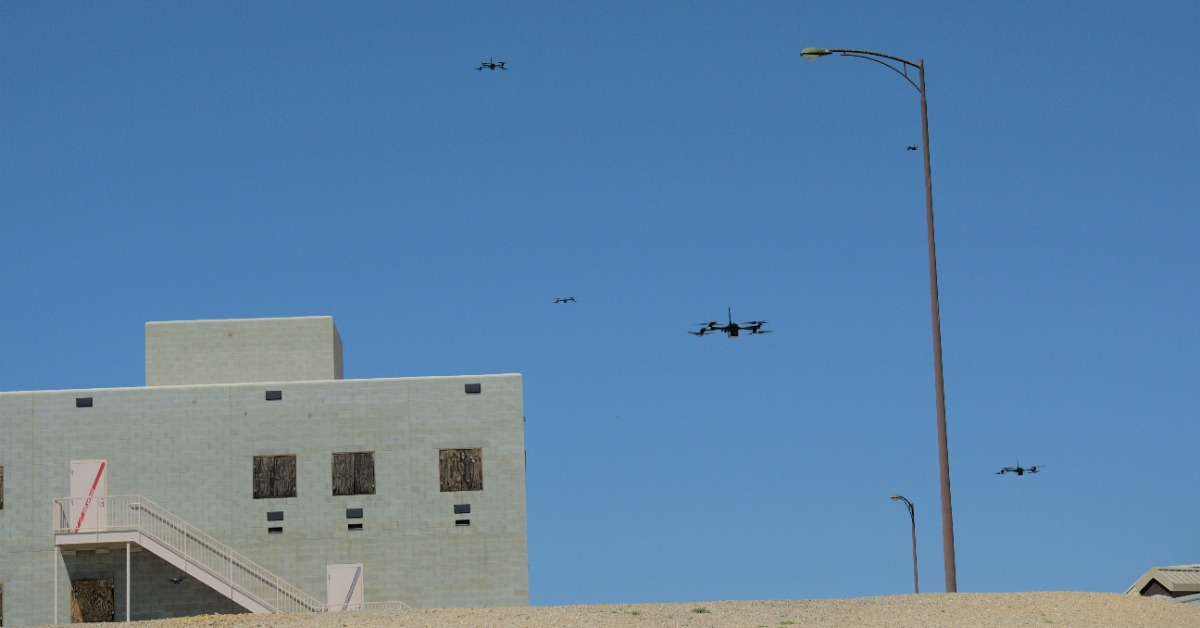May 25, 2022 (Mountain View, CA)—The Defense Innovation Unit’s (DIU) Artificial Intelligence for Small Unit Maneuver (AISUM) project has completed its first flight test event, teaming Unmanned Aircraft System (UAS) and autonomy vendors to build a collaborative system of autonomous UAS. The AISUM project seeks to develop multi-agent UAS teams capable of autonomous operation and collaboration in dynamic, unstructured, and complex environments. Success in this effort will provide the warfighter 360 degree situational awareness, accelerate the clearance of threats, and prevent loss of operator life.
The prototype consists of the Nova 2 UAS developed by Shield AI, Inc. and the X2D UAS developed by Skydio, joined by multi-agent UAS software supported by Systems & Technology Research, LLC. with a user interface and ground control software developed by Auterion Government Solutions, Inc (AGS). DIU’s AISUM prototype is built upon communication standards that will allow future UAS to be integrated with minimal effort.
5 Skydio X2D and a Shield AI Nova 2 in flight at Camp Roberts, CA (Photo Courtesy AGS)
During the five-day flight event, the AISUM team repeatedly demonstrated multiple small UAS working in conjunction under the control of a single operator. These autonomous UAS use onboard software to avoid obstacles and communicate about the environment while executing mission-type orders.
Prior to prototyping, selected vendors conducted multiple flight demonstrations and evaluations to provide a baseline of current autonomous capabilities. DIU’s AISUM efforts build on a swarm architecture developed by the Defense Advanced Research Agency’s (DARPA) OFFensive Swarm-Enabled Tactics (OFFSET) program. AISUM prototyping will integrate highly autonomous commercial UAS and their complex data streams as multi-agent teams, further scaling this swarm architecture while still leveraging the architecture’s lower order direct UAS control.
U.S. Government partners on the project include the Office of Naval Research, Customs and Border Protection and the Defense Production Act and Title III program.
